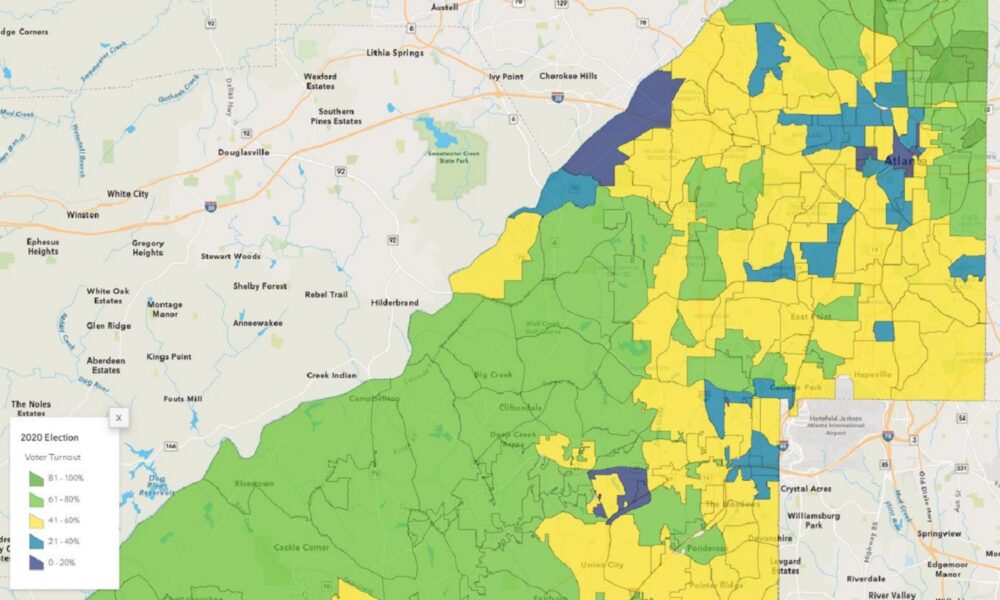Today, the Union of Concerned Scientists released a new interactive map showing 2020 precinct-level voter turnout and ballot rejection rates in 11 counties across seven battleground states—counties that will likely be pivotal in deciding who wins the presidential election this November.
In this post, you’ll learn how to explore this tool and what implications our findings have for the 2024 election.
Explore voter turnout and racial demographics in communities
Using the mapping tool is simple. The map starts on Fulton County, Georgia, but you can move the map to other featured counties, zoom in and out, and click on any voting precinct to see the percentage of registered voters who turned out in 2020, along with a summary of the precinct’s estimated racial demographics in 2020 according to Census data.
Each precinct is color coded from dark orange (0-20 percent of registered voters voted in 2020) to dark green (81-100 percent). One major finding of the analysis is that turnout in the 11 featured counties was highest in majority-White precincts, with an average of 78 percent, and considerably lower in majority-Black (59 percent) and majority-Hispanic (54 percent) precincts.
But one of the most interesting parts of the map is your ability to explore individual precincts. For example, let’s take a closer look at Milwaukee County in Wisconsin. As you can see in the figure below, turnout is generally lower in the heart of the city of Milwaukee and increases the farther out you go as communities become more suburban.
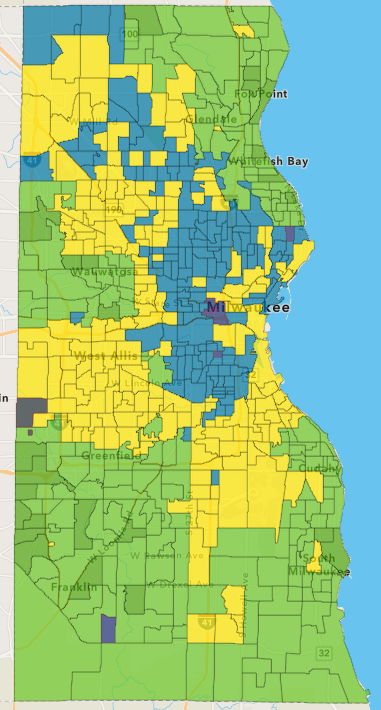
By clicking on one of the precincts near the city center, the below pop-up appears and shows that in Precinct C 0192, a precinct with 22 percent Black, 10 percent Hispanic, 7 percent Asian, 1 percent Native, 54 percent White, and 3 percent mixed race, only 12 percent of registered voters voted in 2020.
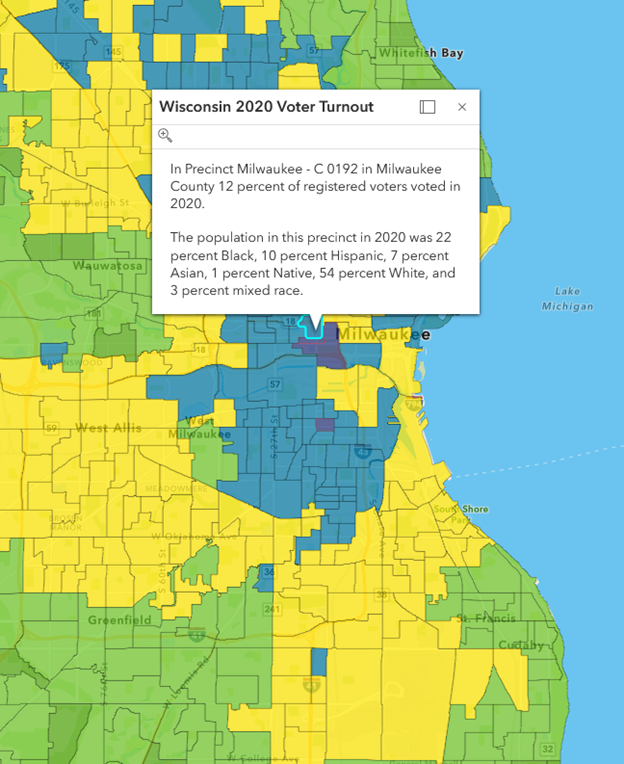
However, in Precinct C 0012, a precinct about four miles west that was 91 percent White in 2020, 84 percent of registered voters voted in 2020—the highest in Milwaukee County.
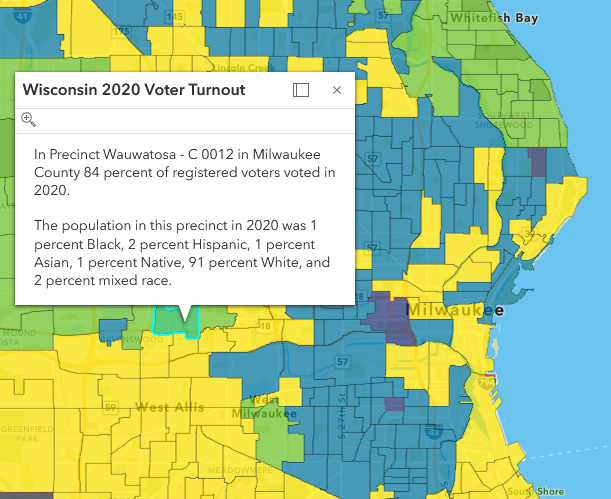
These types of racial disparities in voter turnout result in significant under-representation in the interests, needs, and preferences of Black and Hispanic communities. Consequently, these communities are less likely to have their interests reflected in the decisions made by elected officials, resulting in policies that may fail to protect their health, safety, and well-being.
Explore ballot rejection rates and racial demographics
The second layer of the interactive map shows 2020 precinct-level ballot rejection rates in eight counties across the five states where the data were available. Each county’s precincts are divided into thirds based on the percentage of absentee and/or provisional ballots that were rejected. Absentee ballots are those submitted by mail or drop box while provisional ballots are used by voters whose eligibility is uncertain on Election Day and may or may not be counted depending on their registration status.
Ideally, precincts should have low rejection rates, meaning that more voters were able to successfully have their votes counted. We found that voters living in low-turnout precincts—which are disproportionately majority-Black and majority-Hispanic—were more likely to have their provisional or absentee ballots rejected, further increasing racial inequities in our voting system. Moreover, majority-Black and majority-Hispanic precincts were twice as likely to have a higher incidence of ballot rejections compared to majority-White precincts.
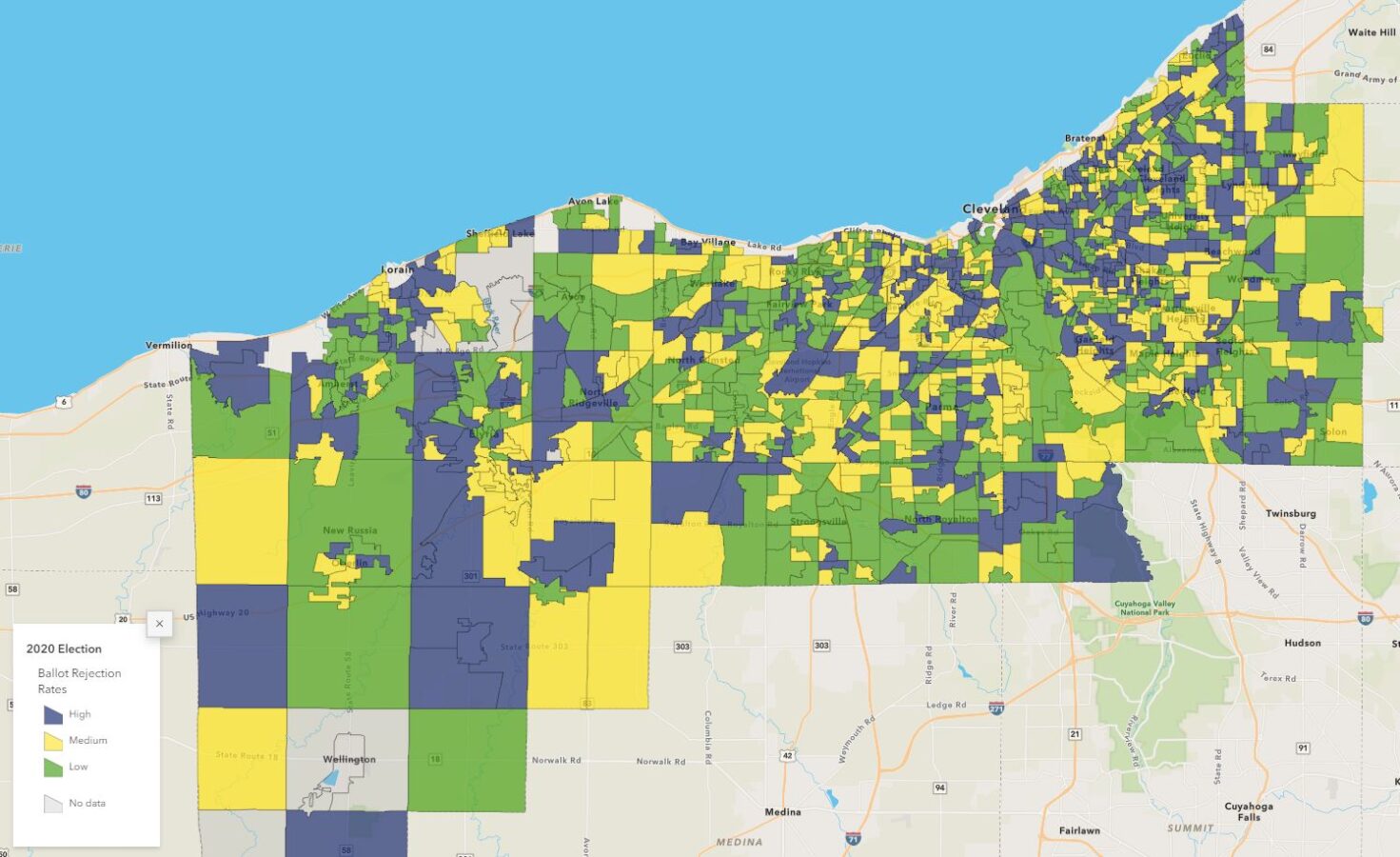
Implications for the 2024 election
The featured counties are generally the most populous counties in swing states that have been pivotal in determining the outcome of presidential elections in recent years. Moreover, these counties were the targets of voter suppression efforts and unproven allegations of fraud during the previous two presidential elections. In 2020, for example, the Trump campaign filed a lawsuit—which was ultimately rejected by the Wisconsin Supreme Court—to disqualify more than 221,000 votes in Milwaukee and Dane counties.
Similar efforts to undermine the fairness of the 2024 election are already underway in other battleground counties. In May, Ohio Secretary of State LaRose directed county election officials to purge infrequent voters ahead of election, which would remove the registrations of more than 158,800 voters—two percent of currently registered voters in the state
Presenting this 2020 precinct-level data and analysis before the upcoming election serves several purposes:
- It establishes a baseline to compare voter turnout and ballot rejection rates from the previous presidential election to help identify any irregularities in 2024.
- It provides precinct-level 2020 voting data to help counter false claims of election fraud.
- It affirms that the overwhelming majority of ballot cast in 2020 in these counties were from eligible voters—and that claims of widespread illegal voting lack merit and evidence.
- It identifies low-turnout precincts to help target voter mobilization and education efforts to increase participation in elections.
- It highlights the critical need to provide, and continually improve, election data transparency
To learn more about the findings of this analysis, see report author Michael Latner’s blog post, New Analysis of 2020 Election Data Sets the Stage for November Vote.
